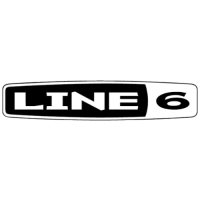Details: CABINET SIMULATIONS
6•21
4. Dark Hall – Recreates the ambiance of a large auditorium or concert hall that has a
lot of space to fill.
5. Bright Hall – Similar to the Dark Hall, but with the lights turned on.
REVERB CONTROLS
These are all available on the REVERB Edit Row (ninth one from the top).
Predelay (0-99) Controls the delay of the first onset of reverberation, so that the dry
signal stands out from the Reverb effect.
Reverb Decay (0-99) Controls how long it takes for the Reverb to die away.
Reverb Tone (0-99) Lets you fine-tune the reverb to be darker or brighter.
Reverb Diffusion (0-99) Determines the “thickness” of the reverb by adding more
reflections to the reverb’s decay. At low settings, you can hear the individual echoes
that make up the overall reverb sound. At higher settings, the echoes smear together.
Reverb Level (0-99) Controls the output level of the Reverb effect. The Reverb
volume is also effected by the DELAY/REVERB Level control on the MAIN Row. For
subtle (volume-wise) reverb effects, try setting the Reverb Level high here on the
Reverb row, and then turn down the Delay/Reverb level on the MAIN Row. This will
give you the best sound quality for your reverbed signal.
CABINET SIMULATIONS
TubeTone Modeling wasn’t just used to create the Amp Models of the AX2. It’s also
the magic behind the extensive collection of cabinet simulations that this system
provides. The cabinet simulation you choose will have a tremendous effect on the
tone of your guitar sound. There is a huge difference between the sound of a small
open-back Vox AC-15 cabinet with its one 12 inch speaker, and the impact of a close-
backed Marshall cabinet loaded with four Celestion Vintage 30 speakers. Neither is
better than the other, in just the way that one amplifier isn’t necessarily better than

